
Most tourists visit Portimão either for the extensive shopping or when using public transport, but there is a surprising amount to be seen within the city.
The city’s old and once bustling fishing docks have been transformed into a scenic promenade, leading to the tree-lined plazas of the old town. Further downtown are pleasant pedestrian shopping streets, a series of historic buildings, and a varied selection of cafes, bars, and restaurants specializing in freshly cooked seafood.
Despite its considerable size, Portimão has a low-key and relaxed ambiance, far removed from the surrounding hectic beach towns. And while it lacks the charm of historic towns, it has some of the best beaches in the region.
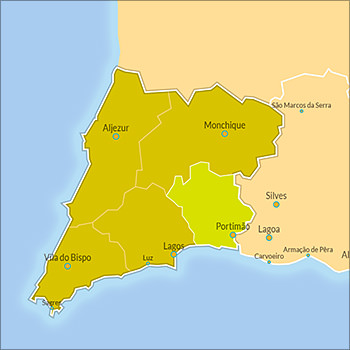
What to do and see in Portimão
• Portimão Museum
Portimão’s largest sardine canning factory ‘La Rosa’ closed in the 1980s but became an award-winning museum in 2008 to present the fish canning industry in the city and local history. You can see the restored production lines and artifacts found around the region (many of them underwater), dating back to prehistoric and Roman times. Everything is labeled in Portuguese and English. For more details, visit their website: museudeportimao.pt

• Igreja de Nossa Senhora da Conceição
Portimão’s main church is located at the highest point of the city and dates back to 1470, preserving the original Gothic portal. The façade of the church follows that of a simplistic 18th-century Manueline styling and does not reflect the actual age of the church. It closely resembled the grand gothic Batalha Monastery, but as with much of Portimao, was severely damaged by the 1755 earthquake. Then everything had to be rebuilt. The only remaining gothic feature is the main portal, while inside are decorative Azulejo tile paintings. The interior features a baroque altarpiece in gilded wood, while the side chapels blend the baroque and the rococo of the late 18th century.

• Igreja do Colégio dos Jesuitas
Portimão’s Jesuit college, built in the 17th century, was one of Algarve’s main educational centers for close to 100 years. The interior is sparse and plain following the belief of the Jesuits. The imposing building includes a large church from 1660, with a simple interior. It was funded by a local businessman, Diogo Gonçalves, whose one condition for the construction was that he was buried in the church. The Jesuits were expelled from Portugal in 1759 and the church was embellished with baroque altarpieces. The former college now houses social services, but the church is open to visitors on weekdays.

• Portimão Marina
The Marina is found to the east of Praia da Rocha. It has its own small beach and a number of restaurants with outdoor seating. It’s a popular destination at night and offers an amazing view across the Arade River to the village of Ferragudo.

• Stroll along the Ribeirinha as it follows the old docks to the Praca de Bivar
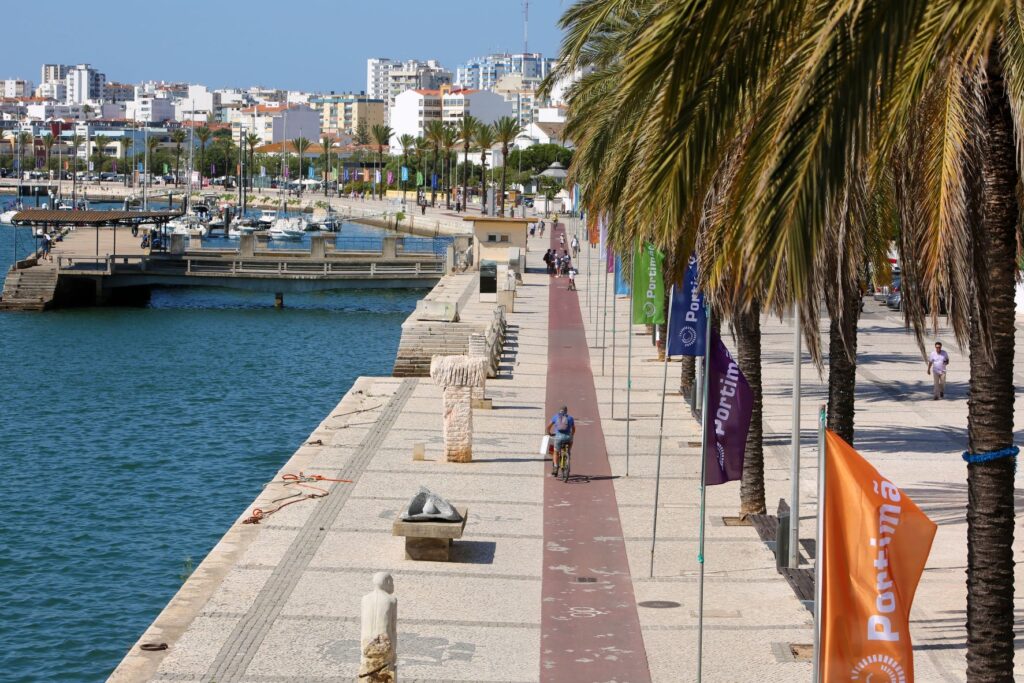
• Admire the beautiful Azulejo tile paintings in the Jardim 1º de Dezembro, which depict the history of Portugal
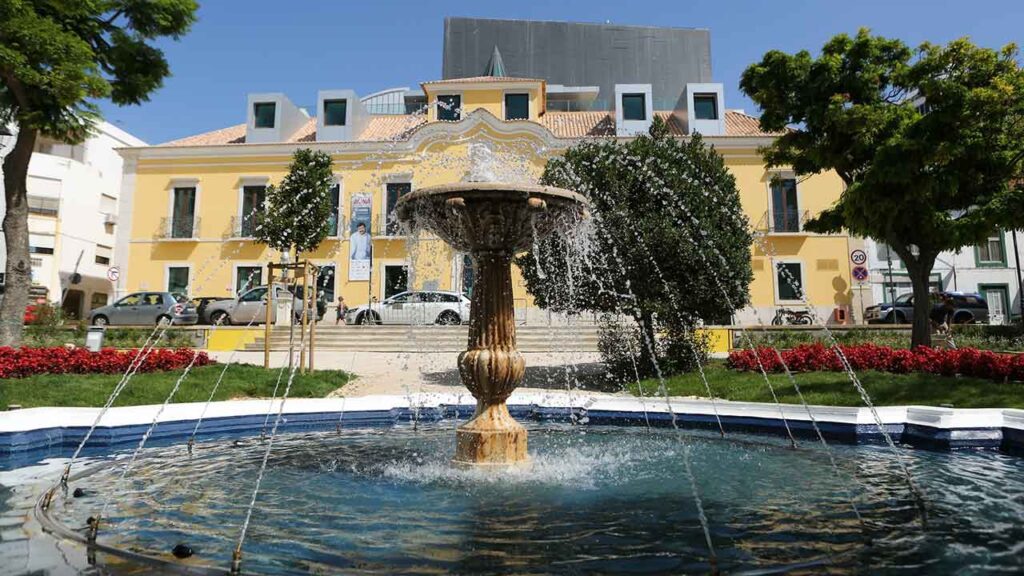
• Santa Bernarda Ship
A replica of a Portuguese 15th-century caravel or a “pirate ship” takes tourists around the coast and stops at the beautiful caves in the region for a short visit. On days when the sea is rougher, it’s not possible to enter the caves, but the ship still sails past them. The 23m-long boat departs from Portimão’s harbor (on Rua Gonçalo Nascimento) and has wheelchair access. The tours last about 3.5 hours, and there’s one in the morning and another in the afternoon. Book your tour online.

• Sardine Festival
In the first week of August, Portimão hosts one of the most popular events in the Algarve, the Sardine Festival. It takes place on the riverfront and mixes live music and dancing with outdoor dining (mostly sardines, obviously).
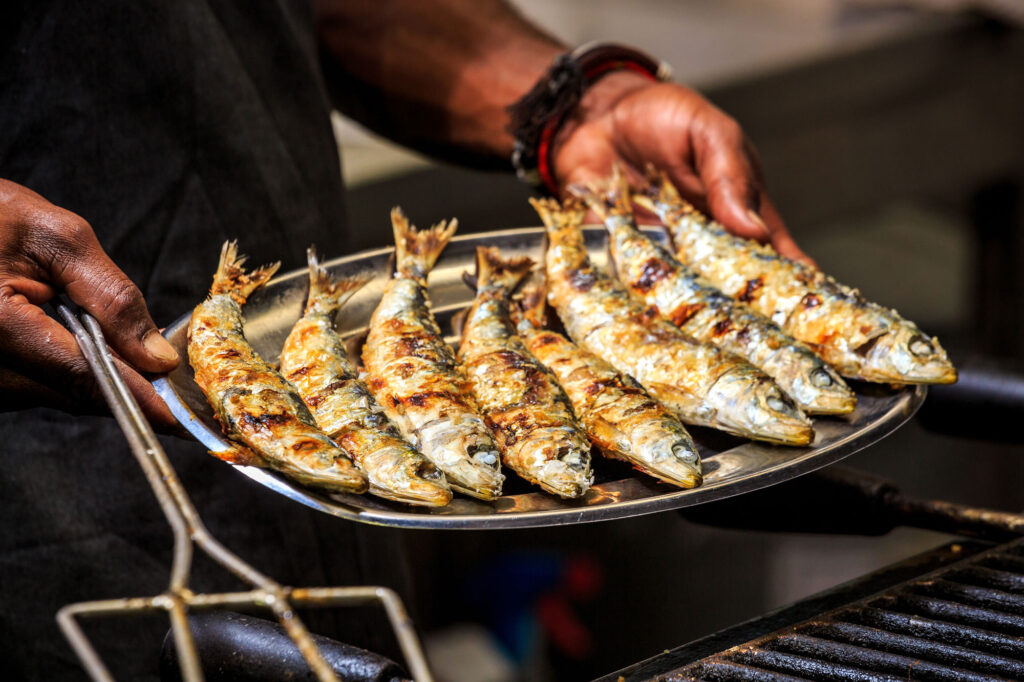
• Visit Alvor
Continuing west you reach the district of Alvor, which looks and feels like a different town. It preserves an old quarter with a 16th-century church and is where many people choose to stay, due to the hotels being close to a number of beaches.
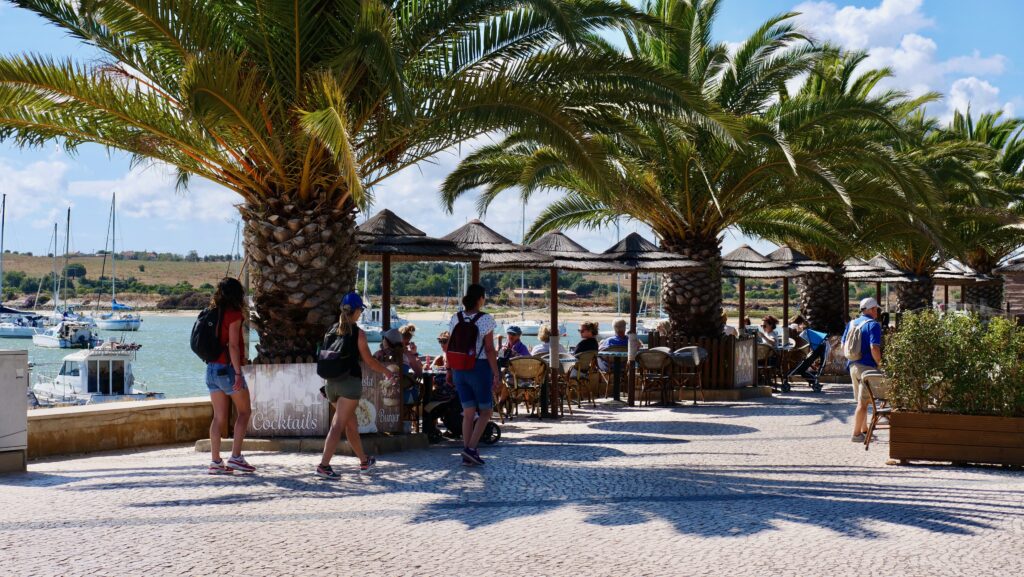
Beaches in Portimão
Portimão has a long coastline divided into several beaches, which are among the most popular in Algarve. The most famous is Praia da Rocha, but those to the west also offer scenery of golden rock formations and are among the most beautiful in Portugal. They can all be discovered on a pleasant walk, following the top of the cliffs, all the way to the João de Arens headland, already in Alvor.
Praia da Rocha
First the blue sea and its gently lapping waves. Then fine, golden sands framed by cliffs and rocks. The cosmopolitan atmosphere of an international tourism destination. This is the Praia da Rocha, the first of the city’s beaches, located where the Arade River meets the Atlantic. This is one of Portugal’s most famous beaches, with towering rock formations, a 17th-century fort, and a boulevard lined with restaurants, bars, shops, clubs, and hotels with sea views. From here it’s possible to walk west to a series of other, quieter, beaches.
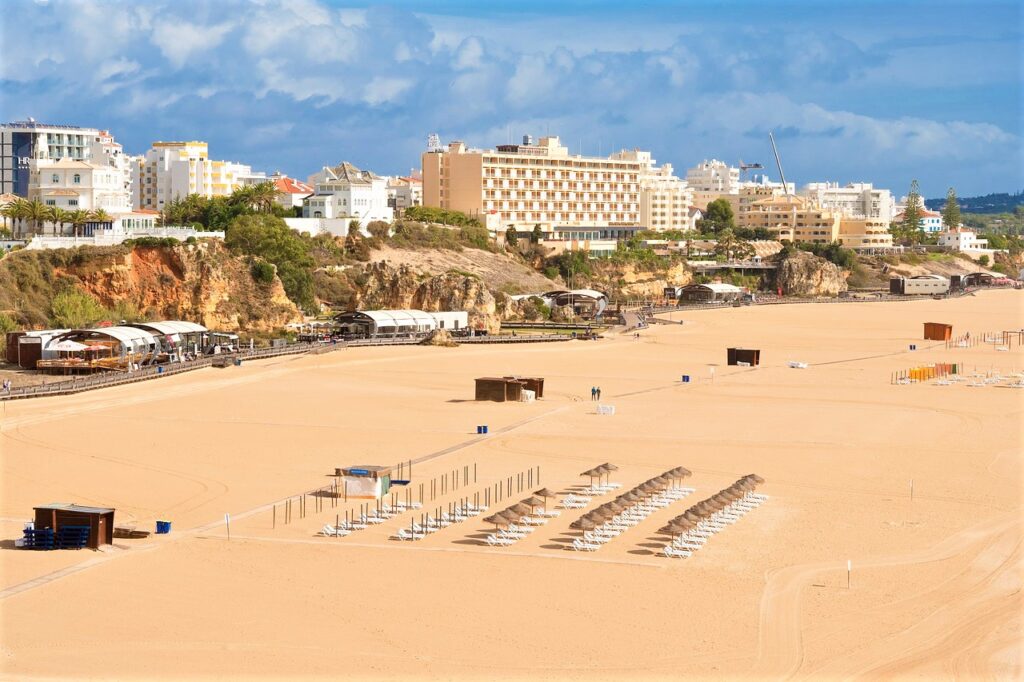
How to get to Portimão
Portimão is the largest city in the region and is a major hub for public transport. It is around 70 km (about 40 miles) from Faro International Airport (FAO), and it is one hour to drive by car if you take the A22 motorway. And a half hour from Lagos, following road N125 or the A22.
By public transportation, the train is the better option, since not only is it faster, there are more departures throughout the day. About 10 trains per day connect it to Faro, taking about 90 minutes. The train station is conveniently located to the north of the city center and is connected to the Algarve regional railway, with services to the west (Lagos) or the east (Faro, Tavira, Vila Real de Santo António). At Tunes (and Faro) there are connections to express services to central and northern Portugal. All services can be seen on the CP (Comboios de Portugal) website: www.cp.pt/passageiros/en
By bus, the Vamus n°57 departs from Faro’s bus station to Lagos and stops in Portimão in 1 hour and 45 minutes.
Eva is the regional bus company of the Algarve and provides services to Silves, Lagos, Albufeira, and Vilamoura. Rede Expressos is an intercity bus company with links covering the whole of Portugal. More information about services can be seen here:
The departure location of the intercity buses has moved to the Rua da Abicada bus station, north of the train station). The regional bus services depart from the Largo do Dique station, which is near the northern side of the Ribeirinha. The two bus stations are separated by 1.5 km (and a walk of 2 km). Always confirm the departure location of your bus when purchasing the ticket!
From Lisbon, there are express buses departing from the Sete Rios Terminal, taking about 3 hours and 45 minutes, depending on how many stops they make in between. There are no direct trains between the capital and Portimão. First, you have to take the train to Faro and then connect to the regional train.
Getting Around Portimão
If you’re staying on or around Praia da Rocha, which is where most hotels are located, you can walk to just about anywhere. If you’re staying closer to the center of town, you need to walk for 20 to 40 minutes to the beaches. To go to Alvor, take a bus but it mostly operates on weekdays. Another option is a taxi or Uber, which are quite inexpensive. Buses 31 and 32 stop at the train station on weekdays and go through the center of the city. On weekends, that route is covered by bus 37.
Why to have a holiday in Portimão?
Portimão has an all-around relaxed atmosphere, and its pleasant pedestrianized shopping streets are not crammed with foreigners. The restaurants and cafes of the town are geared towards the Portuguese, selling more traditional meals at a much better value.
Portimão also has excellent public transport connections, with both bus and rail services connecting the city with the entire western Algarve region. For that reason, people looking for a multi-city/touring holiday might wish to consider Portimão.
The city has a pretty harbourfront and historic center but it is a major city, without the Portuguese charm of many other Algarve destinations. Many of the apartment blocks, particularly on the outskirts of the city, date back to the 1980s.
It can be said that Portimão is perfectly safe as a holiday destination, but it’s just not full of gleaming white hotels, ultra-modern apartments, or traditionally painted houses.
Portimão and its municipality have much more to offer through a rich heritage of historical monuments; the eternal natural beauty of the Ria de Alvor; the charm of cultivated fields, of slopes covered with pine trees and wild flowers as you climb up into the hills of the “serra”, your days in the Algarve thus gaining a whole new dimension.
Accommodation in Portimão
Since everyone visits Portimão for the beaches, almost all hotels are not in the center, but down by the marina, Praia da Rocha, and the coast to the west. But do not worry, there are choices for all budgets.








